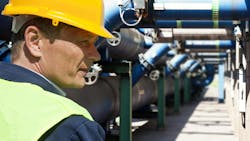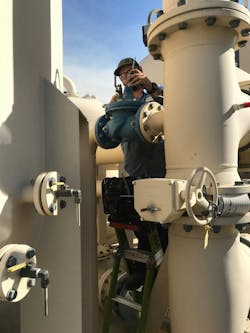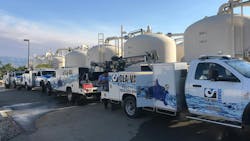Setting up a preventive valve maintenance program
While the fundamental mechanics of control valves have remained largely unchanged, their technological sophistication has increased dramatically. However, as aging infrastructure faces mounting pressure from growing populations, these critical components are becoming increasingly vulnerable to pressure spikes and network incidents. This reality underscores the importance of maintaining valves at their original design specifications.
Preventative maintenance is much easier than replacing or repairing damaged infrastructure. Well-maintained valves play a crucial role in maintaining system pressure, reducing water loss, preventing main breaks, and optimizing energy consumption by eliminating unnecessary pumping. Performing maintenance is more than just setting a schedule; it’s prioritizing the right valve and streamlining the process, which starts with a good plan.
The importance of Tier 1 vs Tier 2 valves
The first step is to take inventory of how many valves you have in your system and facilitate honest discussions within the organizations about system status. While every valve plays a vital role in your water distribution system, categorization is essential. This includes identifying valves beyond repair that require replacement and classifying others into tiers based on criticality. Tier 1 valves, requiring same-day service restoration, demand particular attention, while Tier 2 valves offer more flexibility during maintenance windows due to system redundancies.
The consequences of neglect became apparent in another case. During maintenance on a 35-year-old valve, technicians discovered severe neglect. It started with removing all the old copper and brass fittings to replace with new stainless-steel fittings. The situation was worsened by the presence of black iron fittings threaded directly into the valve's upstream and downstream body ports. Upon removal, they found the threads had deteriorated beyond repair. The improper fittings, combined with the lack of regular maintenance, rendered the valve unusable, necessitating a complete replacement.
The solution at that point was to replace the entire valve body. Luckily the PRV station had a secondary valve in the vault that was still operational and another PRV station feeding the zone. Fortunately, the utility had a new main valve body in the yard and was able to get it installed by the end of the day.
Centralize data collection
Data management proves equally crucial to successful maintenance programs. Centralized information systems enable efficient scheduling of maintenance crews and advanced parts ordering. Many asset management programs can be used for valve maintenance. Some valve manufacturers now offer specialized software solutions, often at no cost, designed specifically for maintenance tracking, like Cla-Val’s Link2Valves App. These programs guide personnel through necessary maintenance checks, ensuring consistency and completeness.
The more information you can collect about a valve, the better you will be prepared for troubleshooting. Be sure to include the type, manufacturer, pilot system, accessories, and pressure set points. Record all the parts replaced and maintenance done to keep the database up to date. Recording the field data on-site into an app will save time and improve accuracy.
Maintain a good inventory of spare parts
This data is important to establish a realistic annual budget on what it's going to take to maintain these assets. Operators can then build an inventory of spare and replacement parts, as they have model numbers and product details in hand. A well-stocked spare parts inventory allows crews to perform routine maintenance with confidence or quickly tend to emergency repairs. If possible, having a service truck outfitted specifically for valve maintenance can ensure crews are well prepared and set off on their rounds easily.
A real-world incident at a California utility illustrates the importance of preparedness. When working on a Tier 1 14-inch pump control valve at a booster station crews began by replacing all the necessary O rings and rubber components. When putting the valve back together to run tests it was quickly realized that the valve was not able to fully open. When removing the cover of the pump control valve to inspect the internal components, the upper stem piece had bent inside the cover bearing. Unfortunately, they did not have one on hand or in the warehouse. Luckily the Cla Val factory was about a 15-minute drive away and the local Rep was able to deliver one within the hour. Such experiences emphasize the necessity of maintaining adequate spare parts inventory, particularly for critical system components.
Keep up with training
Crews need to be trained and get familiar with the different types of valves in their water system. Some manufacturers offer training programs to help build an understanding of valve basics and also provide refreshers on advanced principles and troubleshooting. When crews are new, it is best to work on Teir 2 valves first, allowing them to take their time, do a thorough job, and build their confidence before tackling more complex Teir 1 valves.
Water system operators understand that equipment maintenance rarely proceeds exactly as planned. However, comprehensive preparation—including maintaining adequate parts inventory, proper tools, and well-trained personnel—enables quick adaptation to unexpected challenges. This proactive approach to valve maintenance helps ensure reliable system operation while minimizing service disruptions and repair costs.
About the Author
Matthew Janelli
Matthew Janelli is area sales manager for Cla-Val. As a water system operator for over a decade, Matt understands the daily challenges faced in the field. His passion is to deliver innovative solutions that seamlessly adapt to the customers' ever-changing environments.


